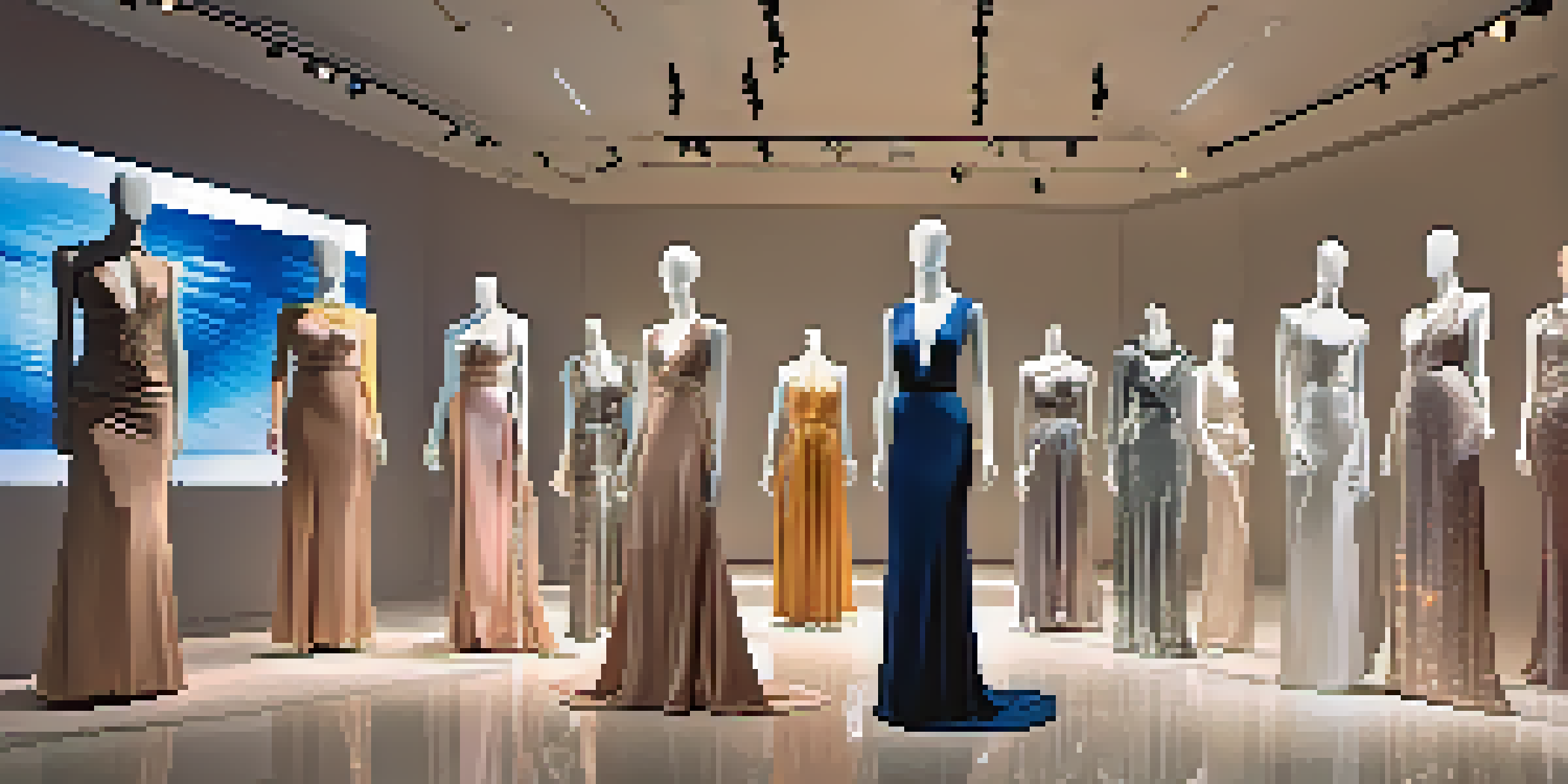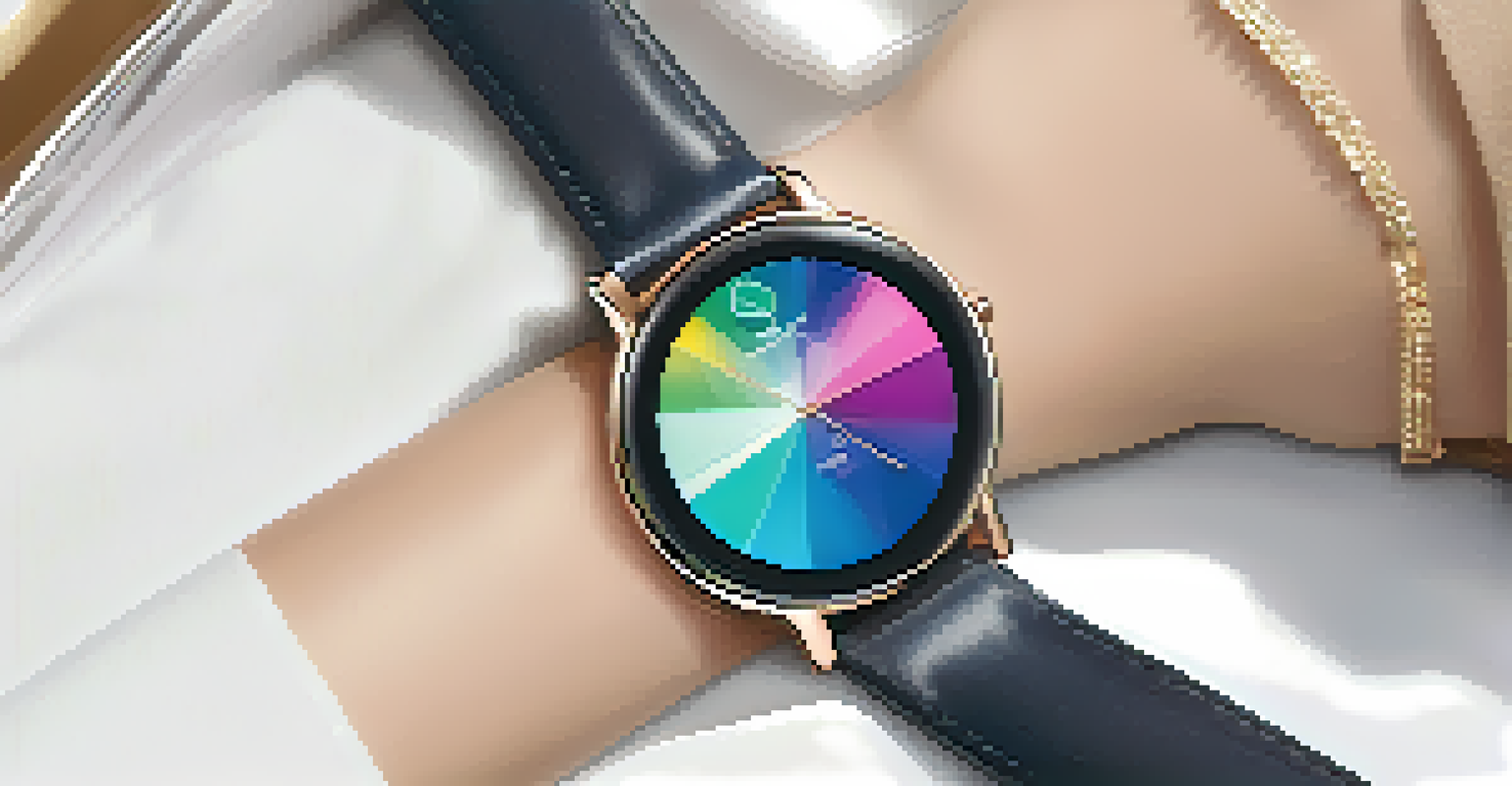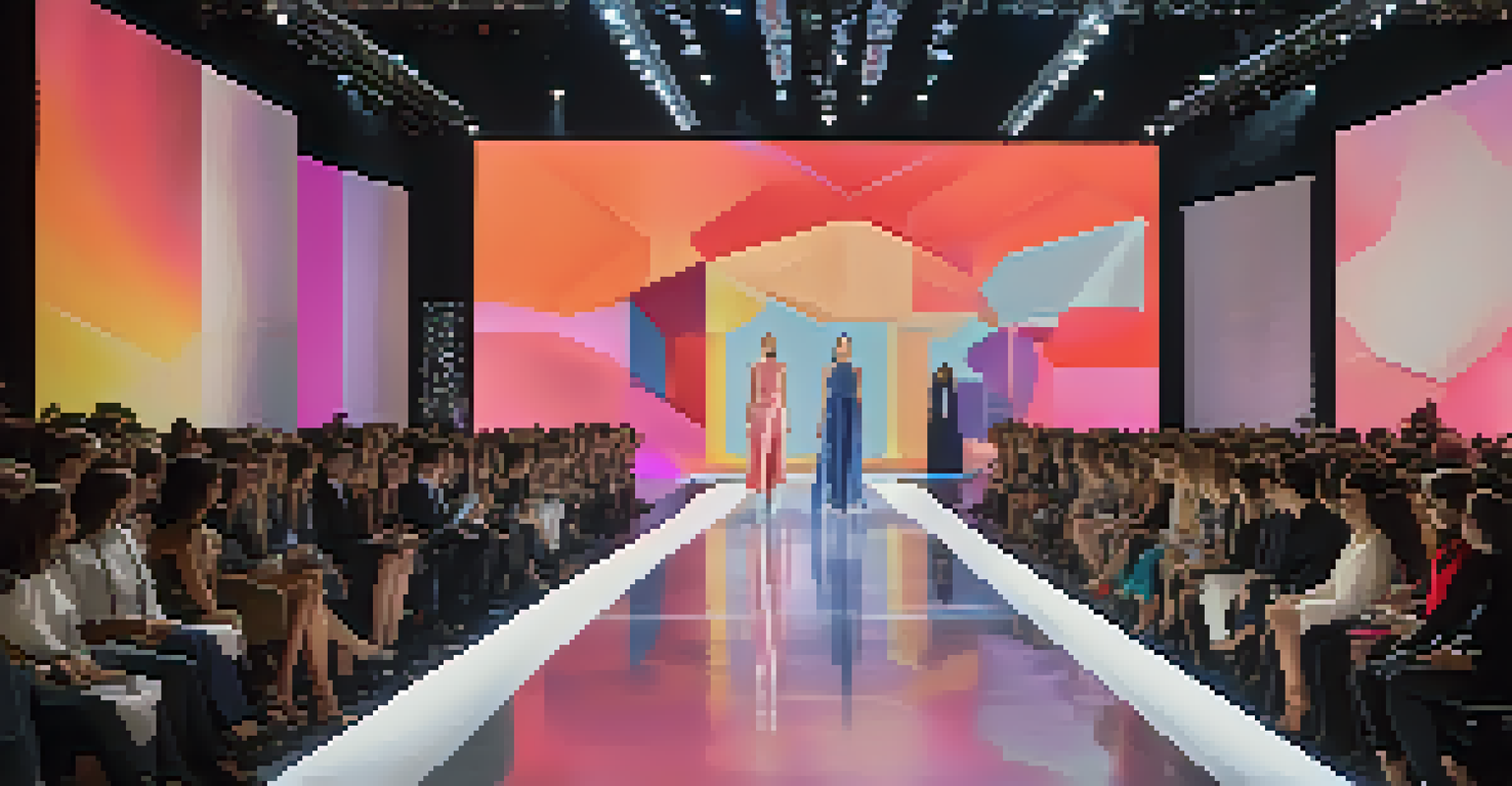Exploring the Intersection of Tech and Luxury Fashion Design

The Rise of Tech in Luxury Fashion: A New Era
In recent years, the luxury fashion industry has experienced a remarkable transformation, largely fueled by technological advancements. Designers are increasingly incorporating cutting-edge technology into their creative processes, leading to unique and innovative designs. This intersection of tech and fashion is not just about aesthetics; it's about enhancing the overall experience for consumers.
Fashion is not something that exists in dresses only. Fashion is in the sky, in the street, fashion has to do with ideas, the way we live, what is happening.
Luxury brands are now using technology to streamline production, improve customer engagement, and personalize shopping experiences. For instance, augmented reality (AR) allows customers to virtually try on clothing, bridging the gap between online shopping and in-store experiences. This shift is creating a more immersive environment for shoppers, which is vital in today's digital age.
Furthermore, the integration of tech in luxury fashion is also paving the way for sustainability. With tools like 3D printing, brands can reduce waste and produce items on demand, aligning luxury with eco-conscious values. As consumers become more aware of their purchasing impact, tech-driven sustainability measures are becoming a significant selling point.
Wearable Tech: Blending Style with Functionality
Wearable technology is one of the most exciting developments at the crossroads of tech and luxury fashion. Smartwatches and fitness trackers have evolved from simple gadgets into stylish accessories that complement high-end outfits. Brands like Gucci and TAG Heuer are merging traditional craftsmanship with modern technology, creating products that resonate with both fashion enthusiasts and tech lovers.

Moreover, wearable tech is not just about tracking fitness or notifications; it's also about enhancing personal style. For example, some luxury brands have introduced garments embedded with LED lights that can change color or display patterns at the touch of a button. This innovative approach allows wearers to express their individuality in ways previously unimaginable.
Tech Transforms Luxury Fashion
Technological advancements are reshaping the luxury fashion industry by enhancing production efficiency, customer engagement, and sustainability.
As fashion houses continue to explore this space, we can expect to see even more sophisticated designs that prioritize both aesthetics and functionality. The future of wearable tech looks bright, promising an exciting blend of luxury and utility that keeps evolving.
The Role of AI in Fashion Design and Production
Artificial Intelligence (AI) is revolutionizing how fashion is designed and produced, making it a vital player in the luxury sector. Designers are leveraging AI algorithms to analyze trends, predict consumer preferences, and even create designs. This tech-driven process not only speeds up production but also ensures that brands stay ahead of the curve.
Sustainability is no longer a niche. It’s a fact of life. It’s what consumers demand, and it’s what we need to do.
One fascinating example is how AI can analyze social media trends to forecast what styles will be in demand. By utilizing this data, luxury brands can make informed decisions about their collections, reducing the risk of overproduction and unsold inventory. This predictive capability is a game changer for the industry, ensuring brands are more responsive to consumer needs.
Additionally, AI is streamlining supply chains, enabling brands to produce items more efficiently. Automation in manufacturing processes reduces costs and time, allowing luxury fashion houses to focus on creativity and innovation. Overall, AI’s role in fashion is reshaping the industry, blending artistry with precision.
Sustainable Luxury: Tech Innovations Leading the Way
Sustainability is becoming an increasingly important focus in luxury fashion, and technology is playing a pivotal role in this shift. As consumers become more environmentally conscious, brands are utilizing innovative tech solutions to reduce their carbon footprints. From using eco-friendly materials to implementing smart production methods, the luxury sector is embracing sustainability like never before.
For instance, some luxury brands are using blockchain technology to provide transparency in their supply chains. This ensures that materials are sourced ethically and sustainably, giving consumers peace of mind about their purchases. Such transparency not only builds trust but also aligns with the values of today's conscious consumers.
Wearable Tech Merges Style and Function
Wearable technology is evolving into stylish accessories that blend fashion with functionality, allowing for personal expression.
Moreover, advancements in fabric technology are leading to the creation of sustainable materials that mimic traditional luxury textiles. Innovations such as lab-grown leather and recycled fibers allow luxury brands to maintain their high standards while also being environmentally responsible. This merging of tech and sustainability is setting a new benchmark in the industry.
The Impact of Social Media on Luxury Fashion Trends
Social media has become a powerful force in shaping luxury fashion trends, and technology plays a crucial role in this evolution. Platforms like Instagram and TikTok allow designers to showcase their creations to a global audience, creating a direct line of communication with consumers. This real-time feedback loop helps brands gauge interest and adapt quickly to new trends.
Influencers and fashion icons are also leveraging social media to curate their personal styles, impacting what consumers perceive as luxury. Luxury brands are collaborating with these influencers to expand their reach and connect with younger audiences. This shift towards influencer-led marketing is redefining how luxury fashion is promoted.
As a result, the fashion landscape is more dynamic than ever, with trends emerging and fading rapidly. Brands now have to be agile, continuously adapting to the fast-paced nature of social media. This constant engagement not only keeps luxury fashion relevant but also allows for a more inclusive and diverse representation of styles.
Virtual Reality: A New Frontier for Fashion Experiences
Virtual reality (VR) is stepping onto the luxury fashion stage, offering immersive experiences that were previously unimaginable. Brands are using VR to create virtual showrooms and runway shows, allowing customers to experience their collections from the comfort of home. This technology is redefining how consumers engage with luxury fashion, making it more accessible and interactive.
Imagine being able to walk through a virtual boutique, trying on outfits in a lifelike setting without ever leaving your house. This is the future that VR is promising, transforming the shopping experience into a captivating adventure. It also enables brands to reach a global audience, breaking geographical barriers.
AI Revolutionizes Design Processes
Artificial Intelligence is changing how fashion is designed and produced, enabling brands to predict trends and streamline operations.
Furthermore, VR can enhance storytelling within fashion, allowing brands to convey their heritage and craftsmanship in engaging ways. By immersing consumers in a brand's narrative, VR creates a deeper emotional connection, fostering loyalty and appreciation for luxury products. As this technology continues to develop, we can expect to see even more innovative applications in the fashion industry.
The Future of Luxury Fashion: A Harmonious Blend
As we look ahead, the intersection of technology and luxury fashion is poised to create a harmonious blend of creativity and innovation. Designers are increasingly embracing tech tools to enhance their craft, leading to unique and boundary-pushing designs. This fusion promises to elevate the fashion experience for consumers while redefining what luxury means.
Moreover, the focus on sustainability and ethical practices is becoming more pronounced, with tech innovations driving this change. Consumers now expect luxury brands to be responsible and transparent, pushing the industry toward a more sustainable future. The integration of technology in this journey is essential for meeting these evolving consumer demands.

Ultimately, the future of luxury fashion lies in its ability to adapt and innovate while staying true to its core values. The ongoing dialogue between technology and fashion will continue to shape the industry, leading to exciting possibilities for both creators and consumers alike.